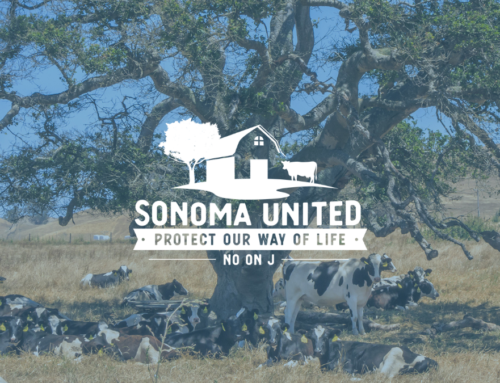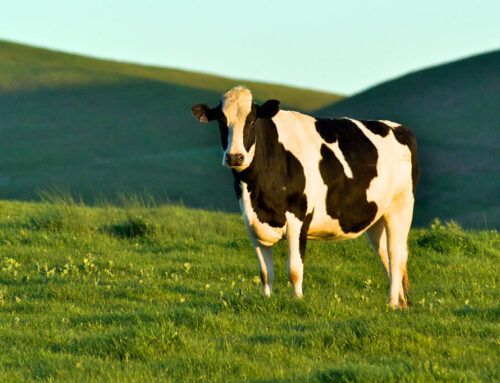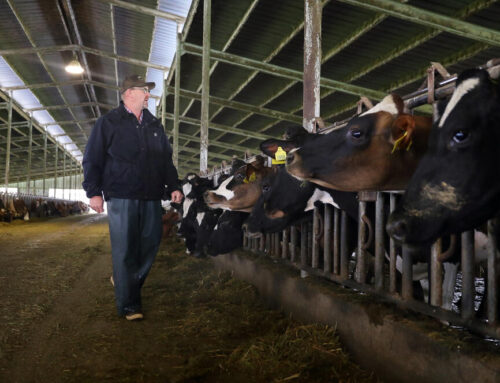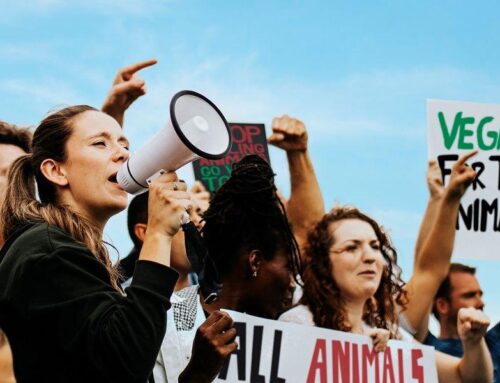Press Democrat | May 14, 2024
A controversial initiative that would make Sonoma County the first county in the nation to outlaw so-called “factory farms” is headed for the November ballot as Measure J.
After hearing from department heads on the likely impacts of the measure, Sonoma County supervisors reluctantly voted 4-0 Tuesday to put it before voters.
With James Gore missing the vote to catch a flight out of town, the board also voted 4-0 to submit a letter of opposition to the ballot measure, which would outlaw larger animal farms and those discharging waste directly into surface water in Sonoma County.
Such operations are known officially as “concentrated animal feeding operations,” or CAFOs.
Among the staff reports presented to the supervisors, the Agricultural Commissioner’s Office said the ordinance, if enacted, would necessitate ongoing expenses of $1.6 million or more to facilitate inspections and reporting, while the Human Services Department cited costs of almost $1.5 million related to job assistance and retraining.
Members of the Coalition to End Factory Farming, the group that wrote the initiative, dispute those figures. The supervisors left no doubt about which side they’re on.
“I was trying to come up with a common thread between two very divergent sides,” Supervisor Lynda Hopkins said. “And then I decided maybe there is one thing that a dairy farm has in common with a CAFO ordinance. And that is bullsh-t. I’m just gonna call it like I see it.”
The letter of opposition will likely appear on the county website sometime within the next two weeks.
Board Chair David Rabbitt made no attempt to hide his disdain. He welcomed farmers at the microphone, but was chilly toward the four animal welfare activists who spoke. And he delivered a self-described “rant” against the proposed ordinance.
“The data is undeniable,” Rabbitt said. “And it’s overwhelming. Just overwhelming. This is not about animal welfare. It never was. It shows, yes, democracy. But it also shows the shortcomings of manipulating the initiative process.”
Rabbitt compared the likely fallout from the ballot measure to what happened, in his estimation, after California passed Prop. 2 in 2008 and Prop. 12 in 2018. Those propositions established minimum space requirements for breeding pigs, veal and egg-laying hens. Rabbitt argued they moved production out of state while devastating agricultural families here in California.
“Where is the benefit?” Rabbitt said. “I don’t see it. I haven’t seen it communicated, I don’t think it can be communicated. Because quite frankly, there is no benefit.”
About 85% of the businesses that might be affected fall within Rabbitt’s and Hopkins’ districts, according to the county Economic Development Board.
The proponents of the ordinance, a coalition of organizations and individuals who seek to highlight mistreatment of animals, believe they have indeed presented a long list of benefits that would fall to the county if CAFOs were prohibited.
“These industrial facilities harm animals,” Cassie King, a member of the group, said at Tuesday’s meeting. “They exacerbate wildfires and droughts. They are incubators for disease, like the avian flu that was mentioned, which has spread to mammals and humans. They pollute our air and water. They most impact the health of workers and people who live nearby these facilities.”
The animal welfare activists who addressed the supervisors were most concerned about the staff reports submitted to the board. In their eyes, much of the information contained in the reports rested on a fallacy.
Some of the data provided by county department heads analyzed the potential harm to every dairy and poultry farm in the county, or alternatively to as many as 60 that might fit into the medium- and large-scale CAFO categories. But the anti-factory-farm coalition is adamant that Sonoma County has no medium-scale CAFOs, as none of them are discharging animal waste directly into surface water, one requirement of the definition.
The coalition has published a list of 21 farms they believe could qualify as CAFOs. The Economic Development Board counts 11 large-scale “animal feeding operations.” It also included 49 medium-scale operations in its analysis to the supervisors. It’s a point of contention with the activists, who say those mid-size sites wouldn’t be affected.
The coalition’s messaging was largely drowned out Tuesday by testimonials from third- and fourth-generation Sonoma County farmers, and dire warnings of how the character of the region might be altered if they disappear.
“I’m second generation,” said George McClelland, owner of McClelland’s Dairy, one of those on the list of large-scale feeding operations. “My children are third and my grandchildren are fourth generation. We plan to stay here and dairy, but we need to milk our cows. We need to have volume to make our payments.
“I sit here and I shake a little bit when I listen to their testimony.”
Stephanie Moreda Arend, whose family owns adjacent properties that, taken together, comprise the largest dairy in the county, said their milk products support 30,000 households. The farm has been in the family for more than 120 years.
“CAFOs are completely different from a factory farm, where animals live inside for the duration of their lives,” Moreda Arend said. “We are a CAFO facility. But our herd is on pasture for the majority of their lives. The goal here isn’t to help animal farming, or small local farmers. The goal with this group is to step by step, methodically and politically eliminate it.”
Those presentations sounded heartfelt. But they didn’t sit well with the animal welfare coalition. Nor did the reaction by the supervisors.
“I feel our side was treated unfairly by Chair Rabbitt and the rest of the board,” Kristina Garfinkel, a member of the coalition, told The Press Democrat after the meeting. “Instead of addressing the faulty report, they chose to elevate misleading information. And then called us liars without giving us a chance to respond, or even tell us what we’re lying about.”





